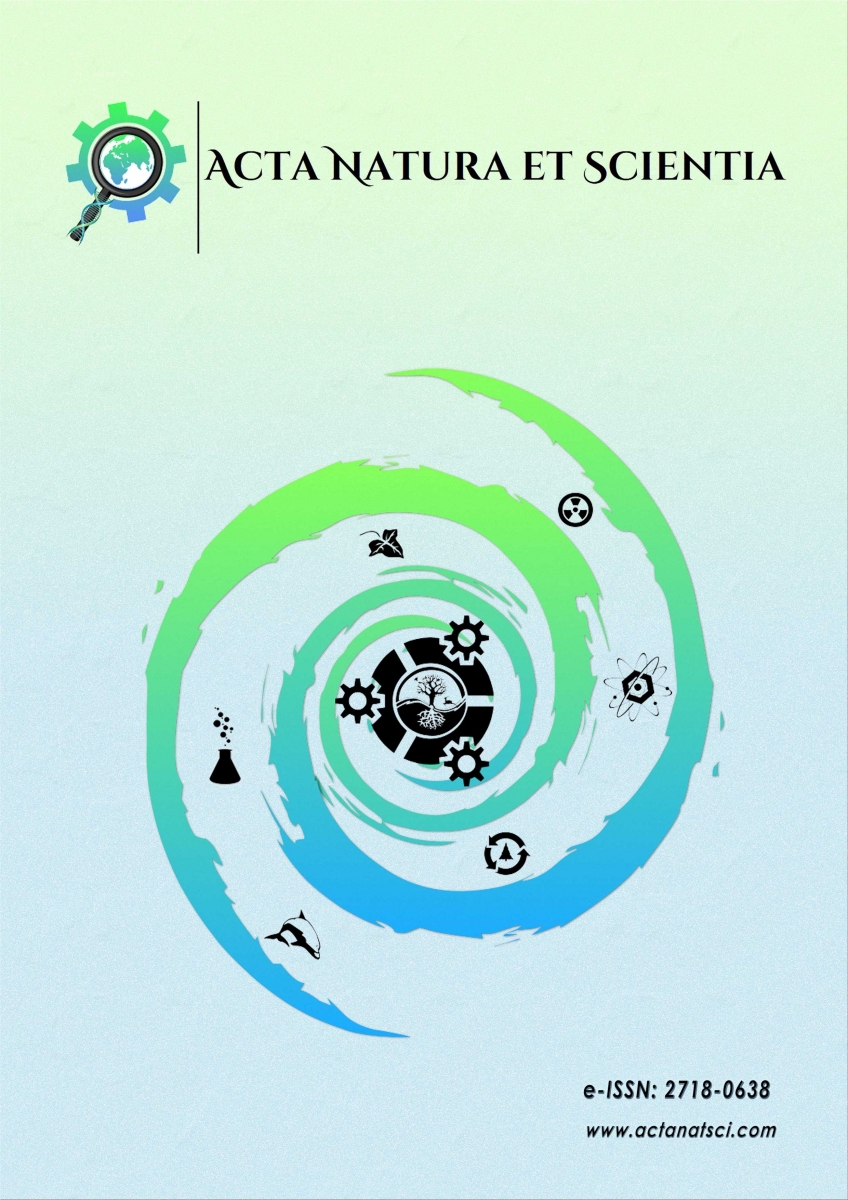- Aljobaily, N., Viereckl, M. J., Hydock, D. S., Aljobaily, H., Wu, T.-Y., Busekrus, R., & Han, Y. (2020). Creatine alleviates doxorubicin-induced liver damage by inhibiting liver fibrosis, inflammation, oxidative stress, and cellular senescence. Nutrients, 13(1), 41. https://doi.org/10.3390/nu13010041 [Google Scholar] [Crossref]
- Alshabanah, O. A., Hafez, M. M., Al-Harbi, M. M., Hassan, Z. K., Al Rejaie, S. S., Asiri, Y. A., & Sayed-Ahmed, M. M. (2010). Doxorubicin toxicity can be ameliorated during antioxidant L-carnitine supplementation. Oxidative Medicine and Cellular Longevity, 3(6), 428-433. https://doi.org/10.4161/oxim.3.6.14416 [Google Scholar] [Crossref]
- Arakawa, M., & Ito, Y. (2007). N-acetylcysteine and neurodegenerative diseases: basic and clinical pharmacology. Cerebellum, 6(4), 308-314. https://doi.org/10.1080/14734220601142878 [Google Scholar] [Crossref]
- Bilgic, S., & Ozgocmen, M. (2019). The protective effect of misoprostol against doxorubicin induced liver injury. Biotechnic & Histochemistry, 94(8), 583-591. https://doi.org/10.1080/10520295.2019.1605457 [Google Scholar] [Crossref]
- Biller, B. (2014). Metronomic chemotherapy in veterinary patients with cancer: rethinking the targets and strategies of chemotherapy. The Veterinary Clinics of North America. Small Animal Practice, 44(5), 817–829. https://doi.org/10.1016/j.cvsm.2014.05.003 [Google Scholar] [Crossref]
- Bulucu, F., Ocal, R., Karadurmus, N., Sahin, M., Kenar, L., Aydin, A., & Yaman, H. (2009). Effects of N-acetylcysteine, deferoxamine and selenium on doxorubicin-induced hepatotoxicity. Biological Trace Element Research, 132(1-3), 184-196. https://doi.org/10.1007/s12011-009-8377-y [Google Scholar] [Crossref]
- El-Sayyad, H. I., Ismail, M. F., Shalaby, F. M., Abou-El-Magd, R. F., Gaur, R. L., Fernando, A., Raj, M. H. G., & Ouhtit, A. (2009). Histopathological effects of cisplatin, doxorubicin and 5-flurouracil (5-FU) on the liver of male albino rats. International Journal of Biological Sciences, 5(5), 466-473. https://doi.org/10.7150/ijbs.5.466 [Google Scholar] [Crossref]
- Gibson-Corley, K. N., Olivier, A. K., & Meyerholz, D. K. (2013). Principles for valid histopathologic scoring in research. Veterinary Pathology, 50(6), 1007–1015. https://doi.org/10.1177/0300985813485099 [Google Scholar] [Crossref]
- Hjelle, J. J., & Petersen, D. R. (1983). Metabolism of malondialdehyde by rat liver aldehyde dehydrogenase. Toxicology and Applied Pharmacology, 70(1), 57-66. https://doi.org/10.1016/0041-008X(83)90179-5 [Google Scholar] [Crossref]
- Koçkar, M. C., Nazıroğlu, M., Çelik, Ö., Tola, H. T., Bayram, D., & Koyu, A. (2010). N-acetylcysteine modulates doxorubicin-induced oxidative stress and antioxidant vitamin concentrations in liver of rats. Cell Biochemistry and Function, 28(8), 673-677. https://doi.org/10.1002/cbf.1707 [Google Scholar] [Crossref]
- Li, P., Wu, M., Wang, J., Sui, Y., Liu, S., & Shi, D. (2016). NAC selectively inhibit cancer telomerase activity: A higher redox homeostasis threshold exists in cancer cells. Redox Biology, 8, 91-97. https://doi.org/10.1016/j.redox.2015.12.001 [Google Scholar] [Crossref]
- Lowry, O. H., Rosebrough, N. J., Farr, A. L., & Randall, R. J. (1951). Protein measurement with the Folin phenol reagent. Journal of Biological Chemistry, 193(1), 265-275. https://doi.org/10.1016/S0021-9258(19)52451-6 [Google Scholar] [Crossref]
- Moslehi, J. J. (2016). Cardiovascular toxic effects of targeted cancer therapies. The New England Journal of Medicine, 375(15), 1457-1467. https://doi.org/10.1056/nejmra1100265 [Google Scholar] [Crossref]
- Nagasaki, H., Nakano, H., Boudjema, K., Jaeck, D., Alexandre, E., Baek, Y., Kitamura, N., Yamaguchi, M., & Kumada, K. (1998). Efficacy of preconditioning with N-acetylcysteine against reperfusion injury after prolonged cold ischaemia in rats liver in which glutathione had been reduced by buthionine sulphoximine. European Journal of Surgery, 164(2), 139-146. https://doi.org/10.1080/110241598750004805 [Google Scholar] [Crossref]
- Ohkawa, H., Ohishi, N., & Yagi, K. (1979). Assay for lipid peroxides in animal tissues by thiobarbituric acid reaction. Analytical Biochemistry, 95(2), 351-358. https://doi.org/10.1016/0003-2697(79)90738-3 [Google Scholar] [Crossref]
- Otrubová, O., Turecký, L., Uličná, O., Janega, P., Luha, J., & Muchová, J. (2018). Therapeutic effects of N-acetyl-L-cysteine on liver damage induced by long-term CCl4 administration. General Physiology and Biophysics, 37(1), 23-31. https://doi.org/10.4149/gpb_2017016 [Google Scholar] [Crossref]
- Prasanna, P. L., Renu, K., & Gopalakrishnan, A. V. (2020). New molecular and biochemical insights of doxorubicin-induced hepatotoxicity. Life Sciences, 250, 117599. https://doi.org/10.1016/j.lfs.2020.117599 [Google Scholar] [Crossref]
- Rivankar, S. (2014). An overview of doxorubicin formulations in cancer therapy. Journal of Cancer Research and Therapeutics, 10(4), 853–858. https://doi.org/10.4103/0973-1482.139267 [Google Scholar] [Crossref]
- Saleh, D. O., Mahmoud, S. S., Hassan, A., & Sanad, E. F. (2022). Doxorubicin-induced hepatic toxicity in rats: Mechanistic protective role of Omega-3 fatty acids through Nrf2/HO-1 activation and PI3K/Akt/GSK-3β axis modulation. Saudi Journal of Biological Sciences, 29(7), 103308. https://doi.org/10.1016/j.sjbs.2022.103308 [Google Scholar] [Crossref]
- Samuni, Y., Goldstein, S., Dean, O. M., & Berk, M. (2013). The chemistry and biological activities of N-acetylcysteine. Biochimica et Biophysica Acta, 1830(8), 4117–4129. https://doi.org/10.1016/j.bbagen.2013.04.016 [Google Scholar] [Crossref]
- Saricaoglu, F., Dal, D., Salman, A. E., Atay, O. A., Doral, M. N., Salman, M. A., Kilinç, K., & Aypar, U. (2005). Effect of low-dose N-acetyl-cysteine infusion on tourniquet-induced ischaemia-reperfusion injury in arthroscopic knee surgery. Acta Anaesthesiologica Scandinavica, 49(6), 847-851. https://doi.org/10.1111/j.1399-6576.2005.00722.x [Google Scholar] [Crossref]
- Sikandar, A., Farhat, K., Afzal, A., Ajmal, K., Laeeq, M., & Khokhar, A. (2020). Protective effects of trimetazidine against doxorubicin-induced cardiotoxicity and hepatotoxicity in mice. Journal of Ayub Medical College, Abbottabad: JAMC, 32(3), 304-309. [Google Scholar]
- Timm, K. N., Ball, V., Miller, J. J., Savic, D., West, J. A., Griffin, J. L., & Tyler, D. J. (2021). Metabolic effects of doxorubicin on the rat liver assessed with hyperpolarized MRI and metabolomics. Frontiers in Physiology, 12, 782745. https://doi.org/10.3389/fphys.2021.782745 [Google Scholar] [Crossref]
- Yu, X., Ruan, Y., Huang, X., Dou, L., Lan, M., Cui, J., & Shen, T. (2020). Dexrazoxane ameliorates doxorubicin-induced cardiotoxicity by inhibiting both apoptosis and necroptosis in cardiomyocytes. Biochemical and Biophysical Research Communications, 523(1), 140–146. https://doi.org/10.1016/j.bbrc.2019.12.027 [Google Scholar] [Crossref]
- Zhang, J., Wang, M., Ding, W., Zhao, M., Ye, J., Xu, Y., Wang, Z., Ye, D., Li, D., Liu, J., & Wan, J. (2020). Resolvin E1 protects against doxorubicin-induced cardiotoxicity by inhibiting oxidative stress, autophagy and apoptosis by targeting AKT/mTOR signaling. Biochemical Pharmacology, 180, 114188. https://doi.org/10.1016/j.bcp.2020.114188 [Google Scholar] [Crossref]
|


